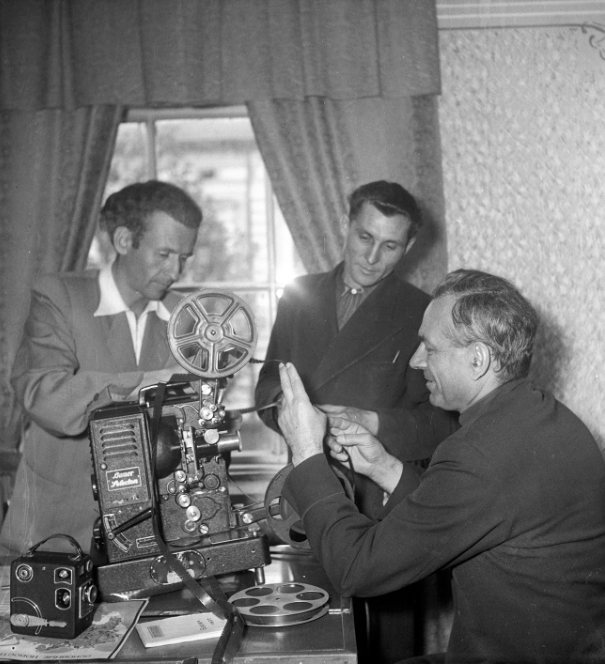
- Title:
Film amateurs of the steam locomotive and car repair plant, photograph dated of 1956
- Year:
- December 7, 1956
- Source:
- Central State Audiovisual and Electronic Archive, 2-55137
Related sources:
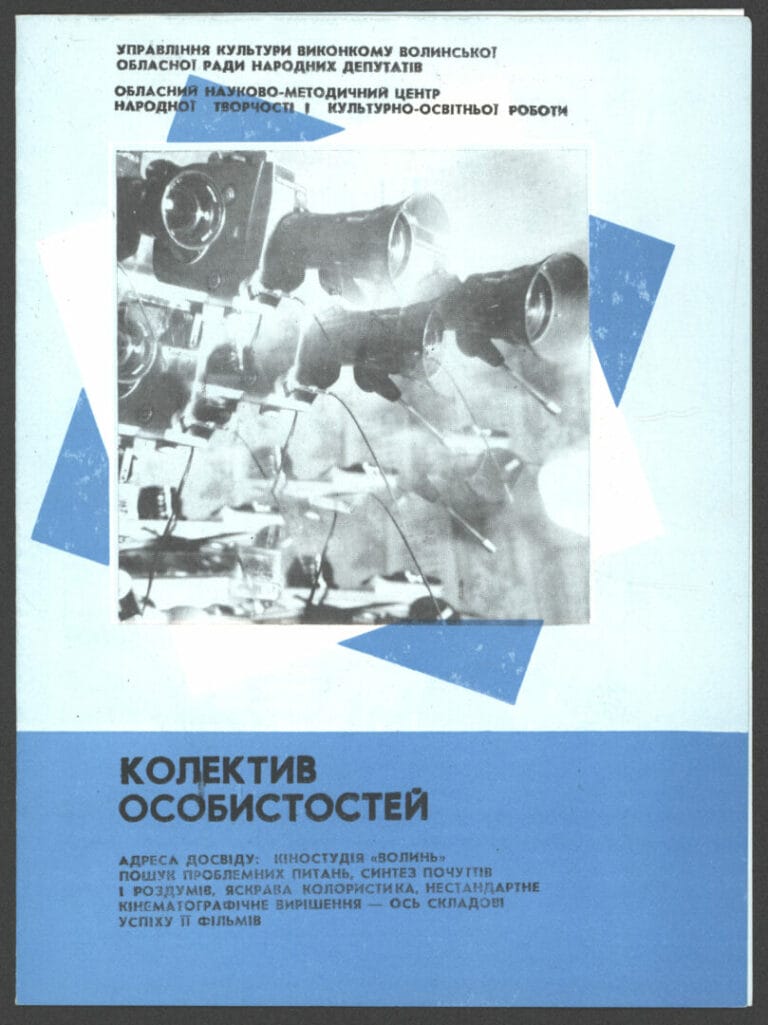
“A Collective of Individuals.” Booklet of the Volyn Amateur Film Studio, 1987
The source provided below is a promotional booklet from the Soviet amateur film studio “Volyn,” located in Lutsk. Unlike studios that were under the authority of and funded by trade union organizations, this studio was affiliated with the oblast department of culture. The booklet highlights the achievements and activities of the studio. This type of publication was widely circulated and exchanged at competitions and festivals of various levels. The presence of such printed materials could further indicate the level of financial support for the studio.
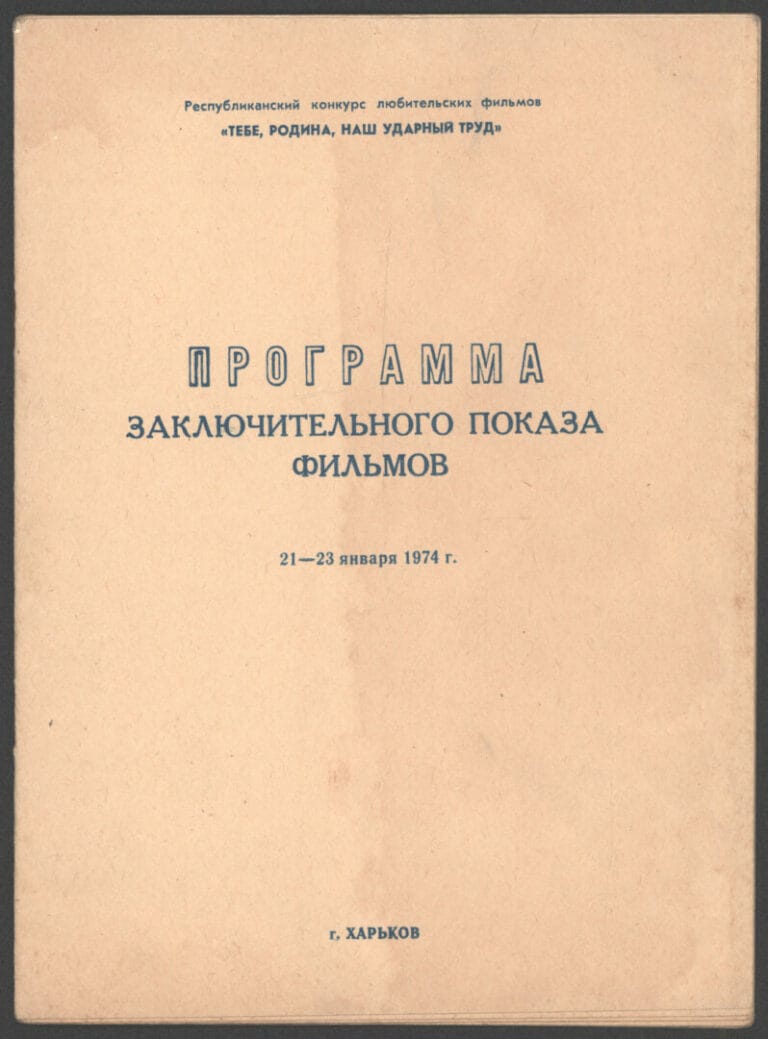
Program of the amateur film competition “For You, Motherland, Our Hard Work,” Kharkiv, 1974
This program is part of the multi-stage film selection for the Soviet-wide competition "For You, Motherland, Our Hard Work." It features a compilation of works from the most active studios in the Ukrainian SSR at the time, including film titles and authors' names. It provides information on the gender and social distribution within the amateur filmmaking movement, as well as its geographic spread. It is striking to note that most listed authors are men. Characteristically, each name is accompanied by a profession, though not always accurate, highlighting the diversity of individuals involved in amateurism. Attention can also be drawn to the film titles and their formats. Many amateurs utilized the professional 35mm format,...
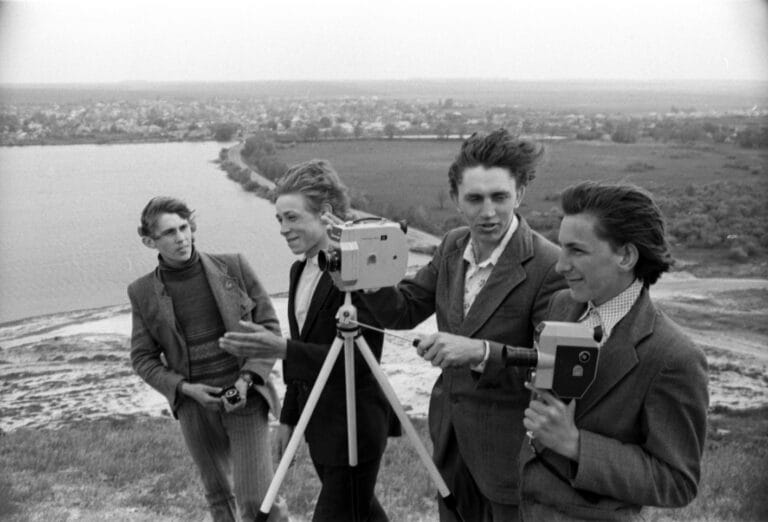
Members of the cinema club in the village of Novooleksandrivka, Ukrainian SSR, during a film shoot, May 1981
In addition to film studios, which predominantly comprised adults, the network of amateur filmmaking also encompassed groups tailored for children and teenagers, typically organized within houses of culture or schools. Oversight of these groups was typically carried out by representatives from People’s Studios and local film clubs. The archival caption of this photograph reads as follows: “Members of the cinema club at the House of Culture in the village of Novoaleksandrovka, Belovodsk district, Voroshilovgrad oblast, during a film shoot. From left to right: students Naydysh A, Petrov P, the club’s leader Kolesnik V. I., student Burian V. — village Novoaleksandrovka, 15 May 1981, by Y. Khromushyn (outdoors against the backdrop of a river).”
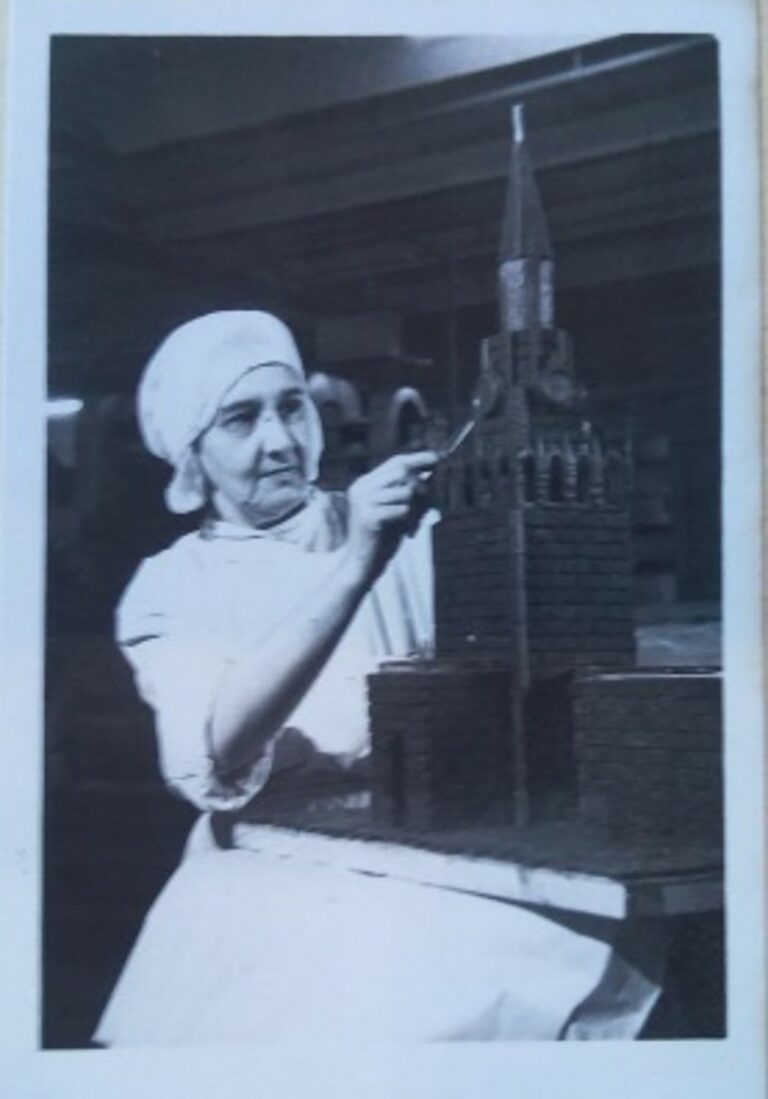
A worker from the Lviv Confectionery Factory “Bilshovyk,” T.M. Etinger, at work, 1956
The photo is part of the collection of press photos from the State Archives of Lviv Region showing different economic areas: industry, agriculture, culture, and sports. The photo shows a worker of Lviv Confectionery Factory, T.M.Etinger. According to the accompanying inscription, she is “one of the best” workers, a labour veteran). She is captured at making a Kremlin’s Savior Tower. The nature of this photo and of the entire collection implies the genre of press photos that had to accompanied by a text (newspaper publication). The photo was meant to illustrate the message, to make it sound more convincing, to encourage and inspire the reading workers to accomplish more in their labour. In...
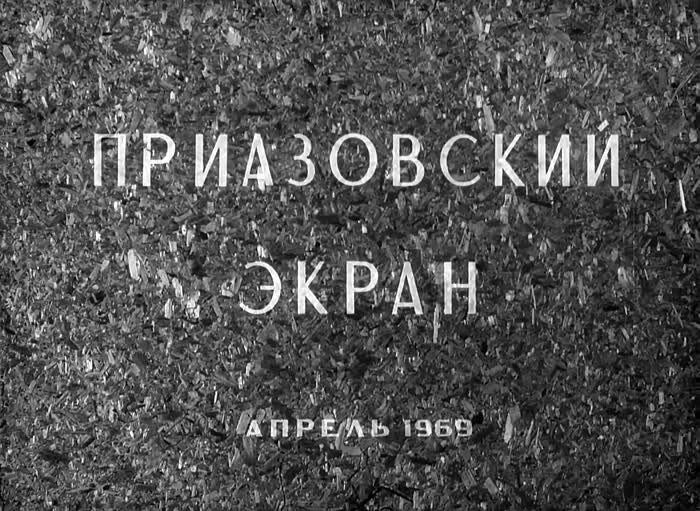
“Screen of Pryazovia” (Pryazovskyi Ekran) № 1, 1969
This newsreel is a valuable source on the history of the development of the Mariupol industry. It was produced by the city club of film amateurs. Following the example of the Ukrkinochronika studio in the capital city which published the main newsreels in the republic, the authors of this piece created a short film report with 4 stories that tell about the deputies, the introduction of innovations in blast furnace steelmaking, about the winners of the socialist competition, and about the meeting of workers with a Soviet cosmonaut.
The early vision of amateur filmmaking in the Soviet Union was characterized by the pragmatic idea of using the new media not only for entertainment but also to involve a wide range of citizens in the production of newsreels and to create a network of correspondents across the country to cover the construction of socialism. However, despite sporadic attempts, this idea was not immediately implemented on a large scale. The lack of technology and sufficient equipment, and later the political climate of the 1930s, hindered this. It was only after liberalization and Khrushchev's reforms that the idea reappeared on the agenda.
Worked on the material:
- Research, comment
Oleksandr Makhanets
- Visual Laboratory seminar
Еrika Nimis, Andrii Usach, Anna Yatsenko, Nadia Akulova, Іvanna Cherchovych
Comments and discussions

“The initiators of a film studio at the steam locomotive and truck repair plant (from the left to the right) Slutskyn S.S., Art Club Director of Tool and Inventory Shop, Skybalo G.L., Director of Radio Broadcasting Center, and Zirka A.V. are looking through the first shots of the new film about the plant, Lviv December 7th, 1956″. This archival record accompanies this photograph in the Central State Audio/Visual and Electronic Archive (until the recent times called Central State G.S. Pshenychnyi Filming Archive) in Kyiv. Despite it is the official representation of film amateurs that was probably created for the purpose of media publications, careful analysis of the details makes it possible to discern the development peculiarities of the Soviet movie amateur filmmaking movement.
Despite the central figures in the shot are film amateurs, considerable interest is aroused by the film projector and the camera placed on the table in front of them. The film projector is a German product of the 1930s called “Bauer Selecton”. The same is about the “Siemens Halske F” camera. The equipment is meant for the amateur format of the 16mm film that was much cheaper as compared to the professional 35 mm format. The use of German filming equipment by Soviet shop workers in the 1950s is not quite a weird phenomenon. At that moment, the USSR had not adjusted regular and serial production of its own equipment for film amateurs, though the theme was a common parlance in those times. One can say for sure that the film projector and the camera are the so-called “trophies” acquired at the time of World War II. Trade in items the military brought from Germany in coming back from the frontline was rather frequent. Besides, one cannot reject the version that that equipment could have once belonged to Lviv residents living in the city before the war.
The photograph was apparently aimed at propaganda. First and foremost, one can easily recognize the trend of socialist realism and the inscribed messages of success, enthusiasm, collectivism, unity, the common goal and the result of hard labor as well as the harmony of work and useful leisure. The same is about amateur films, them being one of the photograph’s intended images in the discourse of the Soviet power that viewed all that as a method of cultural, upbringing-aimed and ideological work. Those features are common for the monopolized media culture of the USSR where entertainment and informing were inseparable from propaganda.
As far as the register of the aforementioned messages, one must emphasize collectivism. In the context of amateur filmmaking movement and overall, that feature was treated as specifically Soviet and contrasted to the related model existing in the western society. Collectivism was cherished and supported as a counterbalance to individualism that was treated as a Philistine (bourgeois) feature that was considered a potential hazard, since it could contain dissension. Despite amateur filmmaking movement was a hobby and was associated with entertainment, the Soviet power considered it to be institutionalized. Accession of film amateurs to amateur filming clubs and studios became a method of controlling the amateur process and scanning its results.
The photograph of Lviv film movie amateurs presented here is the reflection of the gender stereotypes vital to that epoch, where affection to technology and activities with a camera in one’s hand was viewed primarily as a men’s job. Probably, there were women fond of filming but their names among the Soviet film movie amateurs are rather infrequent. This state of affairs was apparently caused by conventional gender roles as well as by women having not enough free time due to childcare and nursing duties as well as household chores added to their full-time jobs.